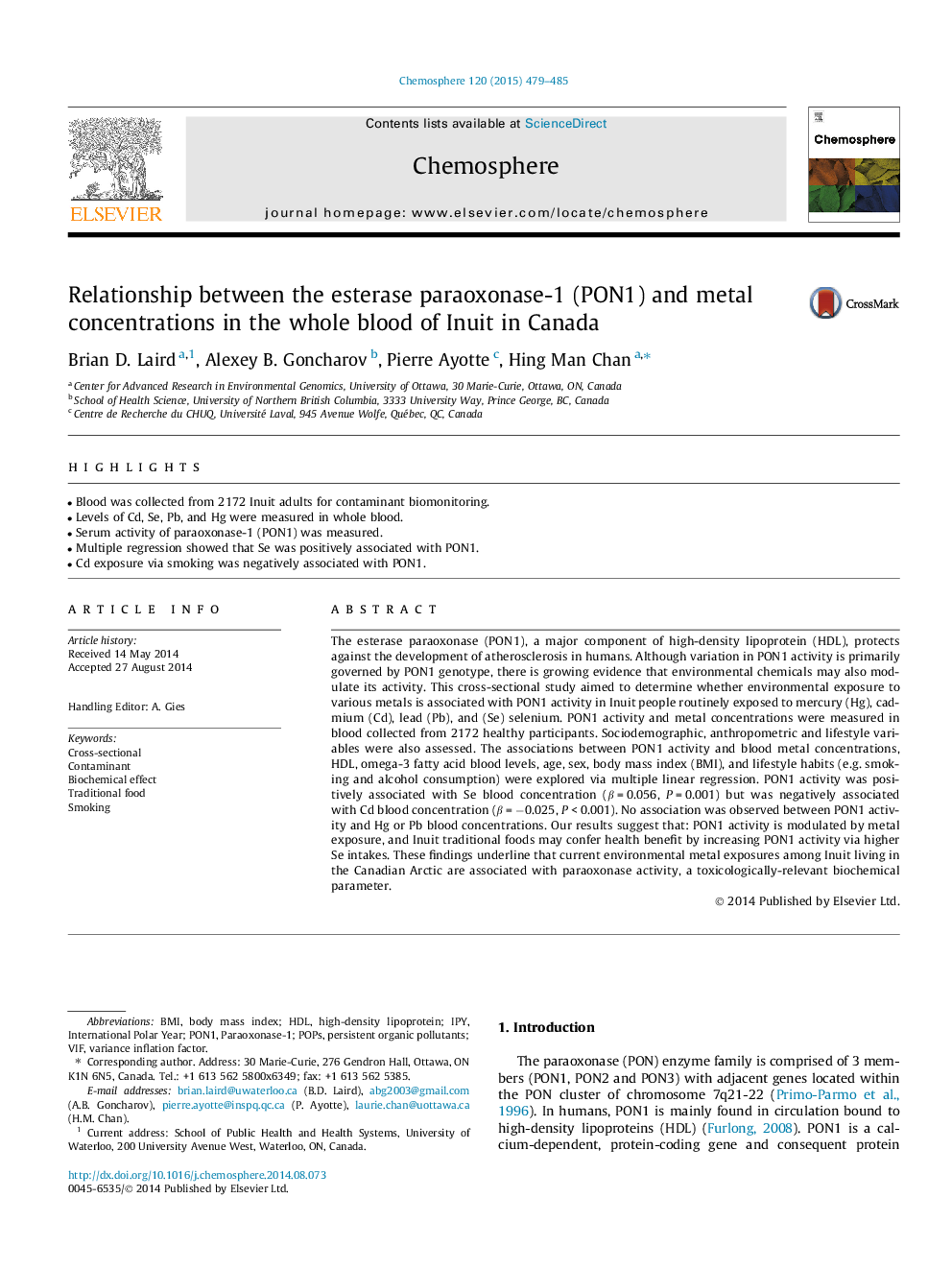| Article ID | Journal | Published Year | Pages | File Type |
|---|---|---|---|---|
| 6308246 | Chemosphere | 2015 | 7 Pages |
Abstract
The esterase paraoxonase (PON1), a major component of high-density lipoprotein (HDL), protects against the development of atherosclerosis in humans. Although variation in PON1 activity is primarily governed by PON1 genotype, there is growing evidence that environmental chemicals may also modulate its activity. This cross-sectional study aimed to determine whether environmental exposure to various metals is associated with PON1 activity in Inuit people routinely exposed to mercury (Hg), cadmium (Cd), lead (Pb), and (Se) selenium. PON1 activity and metal concentrations were measured in blood collected from 2172 healthy participants. Sociodemographic, anthropometric and lifestyle variables were also assessed. The associations between PON1 activity and blood metal concentrations, HDL, omega-3 fatty acid blood levels, age, sex, body mass index (BMI), and lifestyle habits (e.g. smoking and alcohol consumption) were explored via multiple linear regression. PON1 activity was positively associated with Se blood concentration (β = 0.056, P = 0.001) but was negatively associated with Cd blood concentration (β = â0.025, P < 0.001). No association was observed between PON1 activity and Hg or Pb blood concentrations. Our results suggest that: PON1 activity is modulated by metal exposure, and Inuit traditional foods may confer health benefit by increasing PON1 activity via higher Se intakes. These findings underline that current environmental metal exposures among Inuit living in the Canadian Arctic are associated with paraoxonase activity, a toxicologically-relevant biochemical parameter.
Keywords
Related Topics
Life Sciences
Environmental Science
Environmental Chemistry
Authors
Brian D. Laird, Alexey B. Goncharov, Pierre Ayotte, Hing Man Chan,
